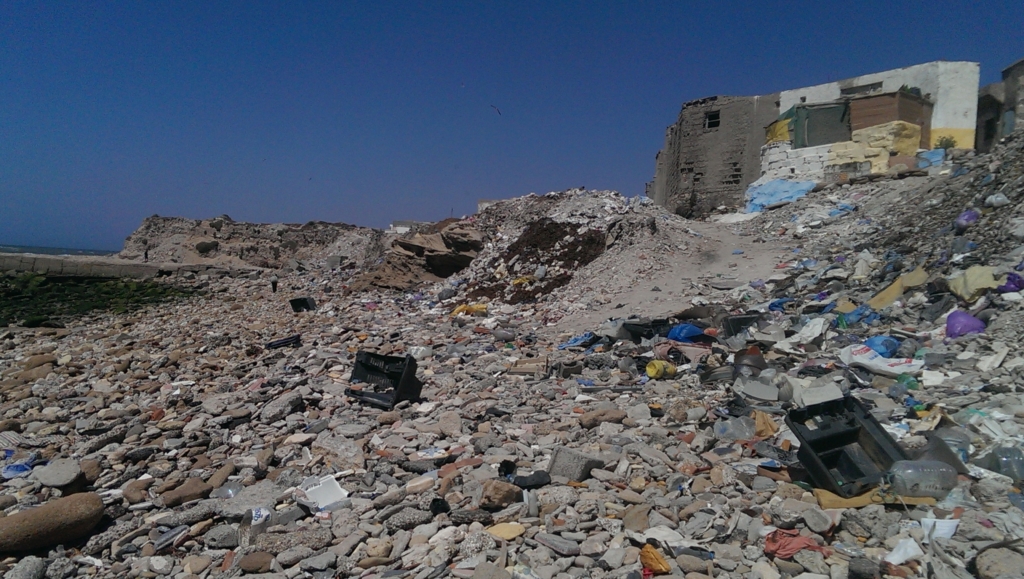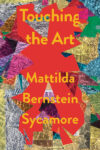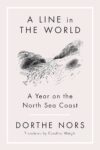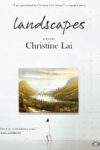Late for the flea market, the three of us drifted away from the vendors packing away piles of second hand clothes and old electrical equipment and up a sloping street lined with more permanent stalls. These were constructed, haphazard from old doors and lintels, pieces of fences and gates, and they displayed seemingly arbitrary heterogeneities of objects for sale, most of which were broken and covered in brick dust or sand. It was hard to tell where the structure of the stall ended and wares began. A customer purchasing a particular faded window shutter might also find herself buying the wall of the shop. When one of us paused a while to look at a particular assemblage, an attendant would appear and fix them with his regard until we moved on, unable to take on responsibility for any of his objects, to transform them into his livelihood. We could have bought things but not paid their way home in jet fuel or afforded the ground to lay them on. A pile of cassette tapes was photographed. To our left were more alleys lined with more stalls, the whole place was quiet, a junk mausoleum.
By the top of the slope, the stalls had given way to simple piles, no longer making a virtue of variation but now sorted by type: lengths of wood and piles of mussel shells. A steep descent and then the sea spread out in front of us — suddenly making sense of the sound of itself, not quite noticed until now — and the beach between. A long concrete pipe covered in green slime, probably for sewage, ended without ceremony a few meters into the water. This beach was rocky where those to the south were sandy, jagged edges showed in the breakwater. The three of us made our way across discarded construction rubble and onto the pebbles and rocks leading down to the water. Neither beaches nor dumps are quite so much places as they are moving groups of objects. Lines signify direction or connections from object to object. The line that separates does not exist.
What is the difference between patterns consciously made and those consciously recognized? Underfoot, the patterns, produced by machine, with which the interiors of homes were once clad, survive; as in the house, so in the rubble. Other patterns are destroyed, like how it felt to walk past cool ceramic on a hot day or over the gaps between tiles with bare feet. Geometric tiling lies here, broken into irregular fragments under the sky. “Mass produced” harmony disintegrates, surrendered to “other” orders. I’m trying not to say “nature” because the concept is corrupt. Suffice to say though, beaches make me question art because they do it all already; shapes, colours, duration, transformation. And yet artists (we?) get seduced by them; spend lifetimes working through processes found where the land meets the sea; edge practices and re-combinations and clichés, in tourist towns every gift shop is called an art gallery.
Closer to the sea and further from the dump the tiles are “tumbled,” as “they” say, like shells are or the red bricks of Newcastle or plastic molecules in the Pacific Ocean. They’ve grown smooth from the caresses and collisions with everything around them. The colors of their tessellated fields are faded by salt and light so that three pieces bearing the same industrially produced pattern are all differently changed. Some pieces carry the concrete or plaster that held them and have found three dimensions.
I had been trying to resist my urge to pick up and take away, but I began to. The three of us stayed for an hour or more photographing and rearranging fractals on the edge of fractals. Attention is possessed by the rhythms of beaches; everything is abstracted into flows of erosion, transport and deposition. We come, as the grains of sand do in a wave, to scratch the surface of pieces of somewhere else, to wear it away.
Hestia Peppe contributes a monthly column for Full Stop of still life writing concerning sugar givers, salt cellars, talismans, fetishes, and transitional objects; an experiment with vanitas not so much as momento mori but as animist memoir.
This post may contain affiliate links.








